How to create a garden, part 8
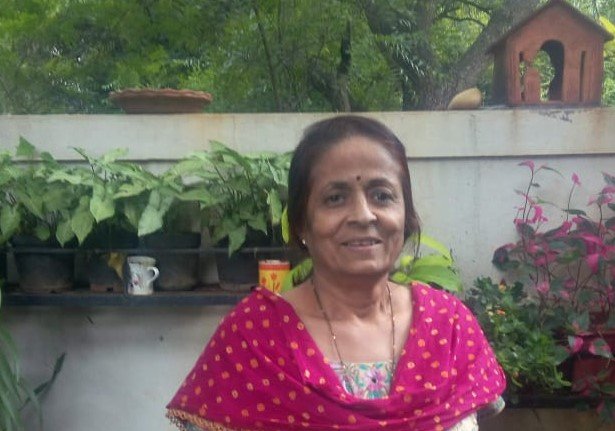
Anjali Lele, Pune
Here is why and how Anjali tai started garden
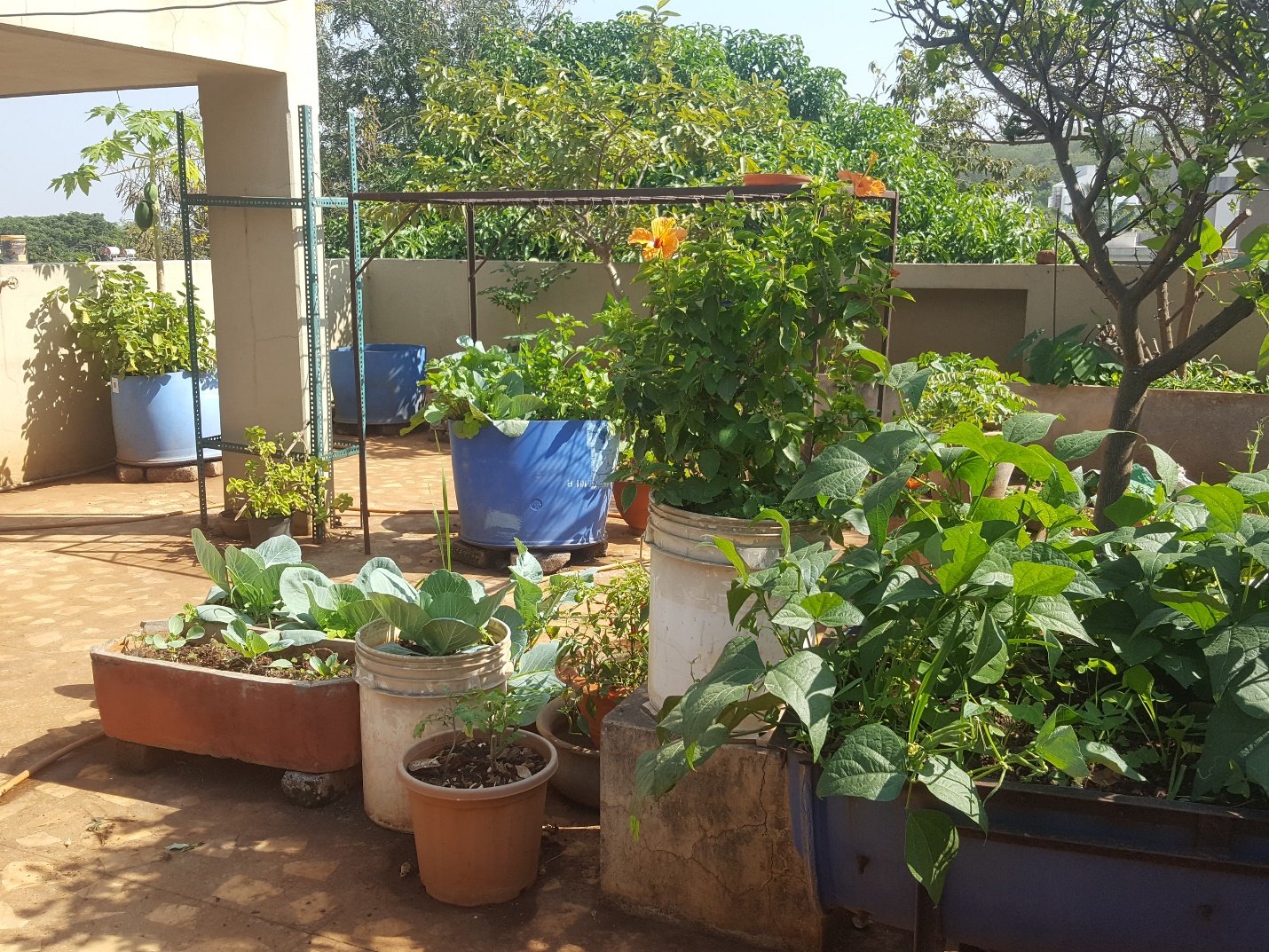
Being a post-graduate in Botany, love for plants, backed up by solid knowledge defines Anjali tai. She has a garden on ground as well as on the terrace in Pune city.
Managing waste has become a challenge like never before for municipalities all over. There is so much discussion about composting now.
Anjali tai was in Varanasi for 18 years, after marriage. Interestingly, at that time, in 1980’s, her father-in-law experimented with pit composting, taking guidance from articles in Scientific American. No municipal garbage collection system existed, but her family used to compost their wet waste.
Later the pit fell in disuse, but family continued to compost wet waste in heap near a tree in the backyard.
After shifting to Pune, she initially started compost in the balcony. Since beginning, she has practiced vermicomposting. She bought earthworms from Inora, an organization in Pune. The worms they provide are surface dwellers, who breakdown the organic matter. Deep burrowing earthworms are not much of help when it comes to composting in containers.
Waterproofing
No special waterproofing was required for terrace garden. The waterproofing done for the house, has proved enough.
Planning
Like any other project, deciding objective is necessary for terrace garden. Here we do not have acres and acres of land at disposal. Hence to get maximum out of a few hundred sq. feet, we need to decide exactly what we wish to cultivate.
Anjali tai has fascination for flowers. She was fortunate to have space wherever she lived. So she created a beautiful flower garden, along with vegetable cultivation.
Anjali tai urges new gardeners to study the area, observe sun movement to understand how much sunlight each section receives. Taking into consideration, summer and winter solstice (उत्तरायण, दक्षिणायन) is vital, if balcony/ terrace is in east-west direction. Especially for balconies, they might not receive much sunlight for 6 months, depending on summer and winter solstice. One might need to move the plants as per these phases.
She suggests never to plant big trees in East-West direction; but they should always be planted in north-south direction. Else, they block maximum sunlight for majority part of the day.
Preparation
Soil is formed with erosion of rocks. Many minerals from the parent material are present in the soil. When we create soil-less gardens, do we miss out on these minerals? Answer is yes. Challenge is that we do not know exactly what we might be missing and what we are depriving the plant of.
Anjali tai suggests adding egg shells regularly to plant containers to provide calcium. She also suggests to have some soil in the containers.
How does she prepare compost?
Anjali tai prepares compost in a drum and in a metal, fabricated, cage-like composter. It is vermicompost with dry leaves and kitchen waste.
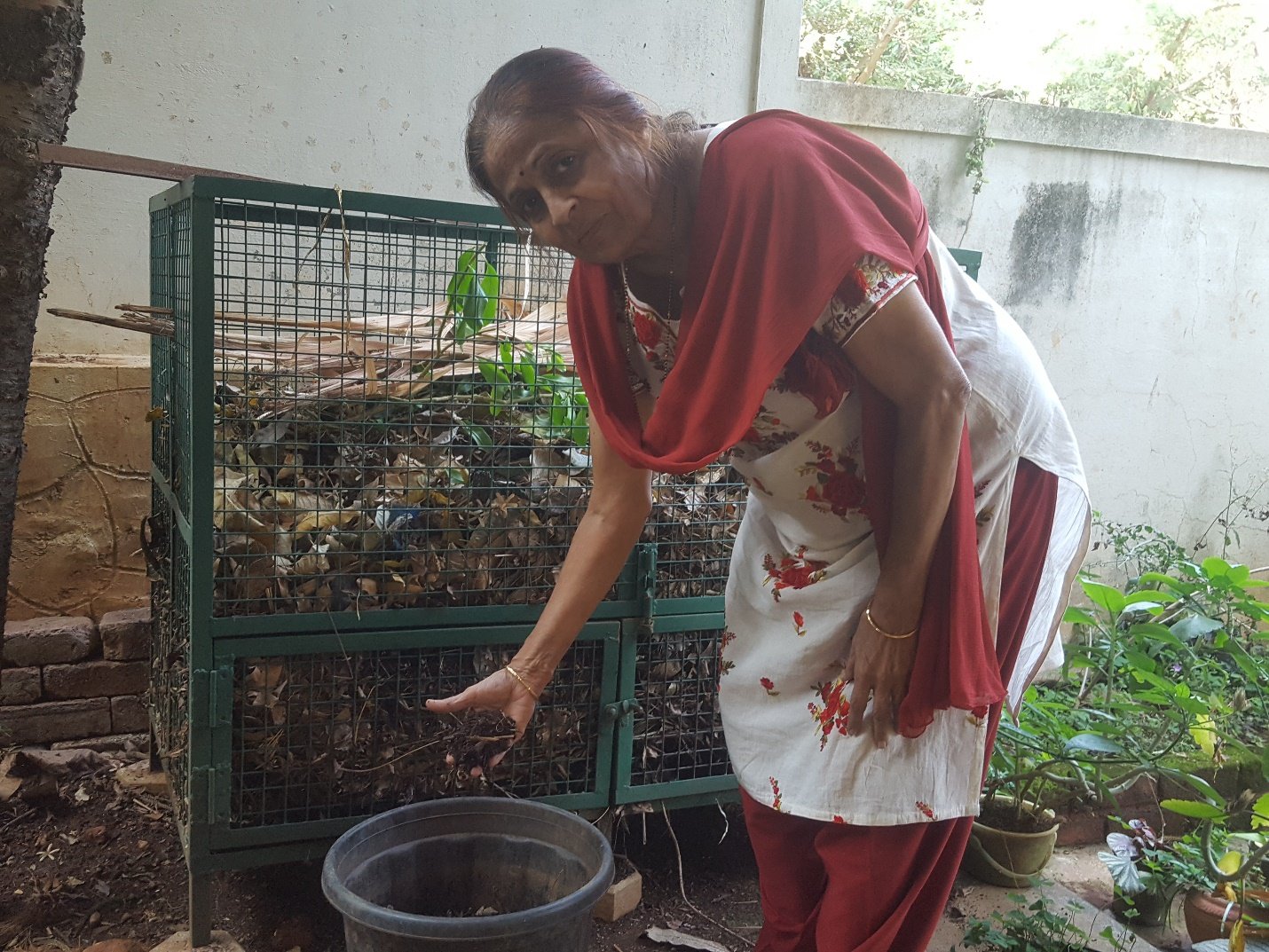
Metal cage-like composter with a door towards bottom to take out ready compost

She also practices “in-situ” composting. I.e. dry leaves and kitchen waste are deposited in the plant container itself, where composting takes place. Her observation is that when there is a plant growing, decomposition of this matter is rapid. She suggests in-situ composting for people with limited space. Instead of composter occupying already scarce space, composting can happen in the plant container itself.
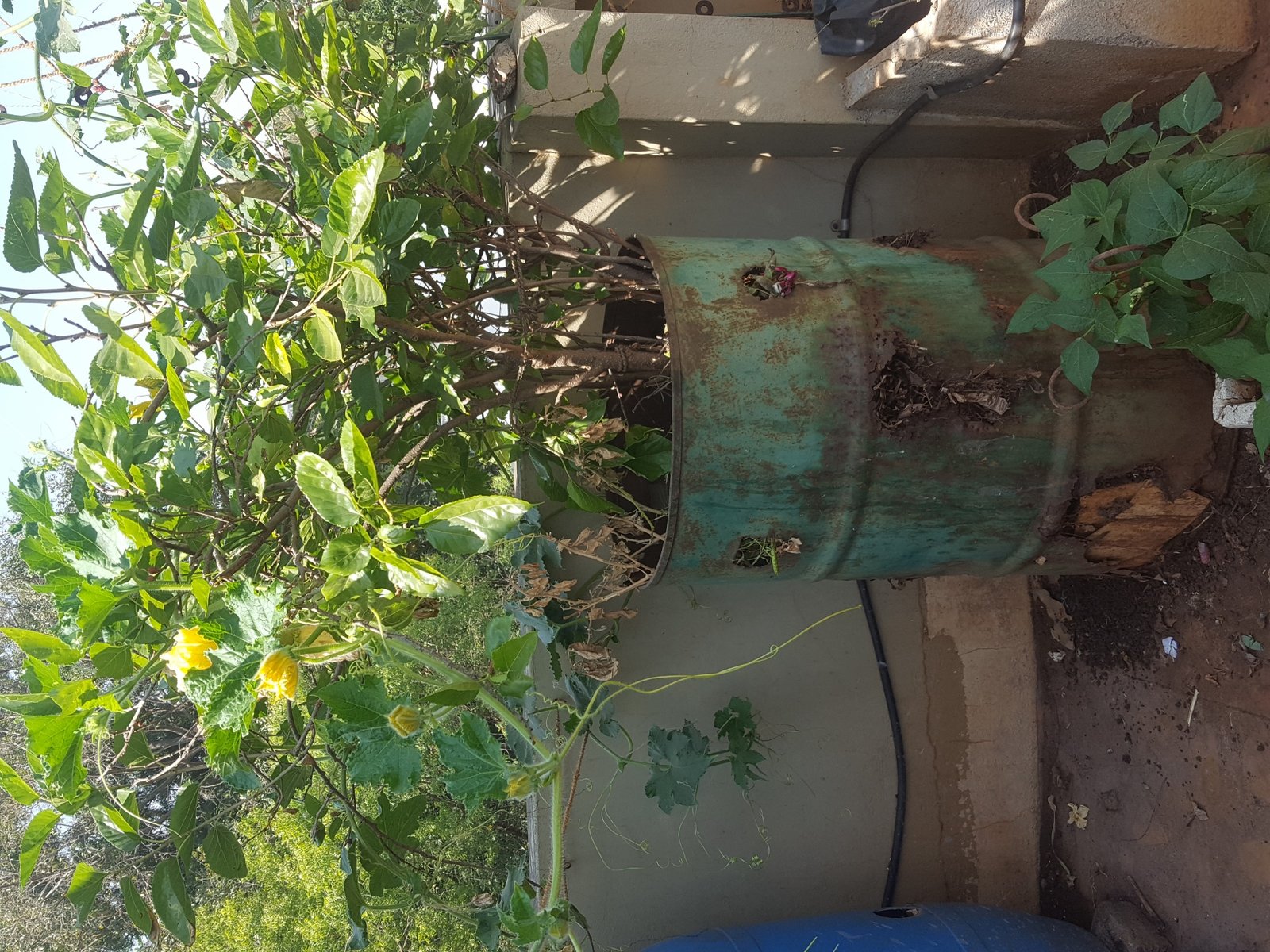
In-situ composting. Add kitchen waste and dry leaves in the plant container and let nature take it course.
Aeration, Temperature and Moisture (ATM) are vital for composting. As far as Pune is concerned, we don’t need to worry about temperature. It is ideal for microbial growth in the compost. Moisture, she feels is a tricky factor. Too much and too little, both are bad.
“Whatever is pleasant for us, same is with earthworms and microbes”, she provides a rule of thumb for the beginners. It should not be too salty, too oily, too sugary.. Take care of these simple things, and you would have a successful compost for the garden.
Where to get dry leaves?
In tropical regions, deciduous trees shed leaves in winter. Leaf fall starts around November and continues till June. Dry leaves is challenge for people. Often dry leaves are burnt since that seems a convenient option. At the same time, there are people like Anjali tai, who need dry leaves for compost.
Why not bring “availability” and “requirement” together? (For details about this initiative, www.brownleaf.org)
Using dry leaves from your own garden and from surrounding areas will prove to be a win-win situation.
Regular Care
There will be infestation from pest from time to time. Observation plays a key role in early detection and management of the same. Aphids, white grubs are common challenges. But Anjali tai feels, at a small scale like an urban garden, it is easy to detect and rectify it. Regularly removing infested leaves takes care of most problems.
Watering
Anjali tai has not setup drip-irrigation in her garden. She feels when we water our garden manually, it brings us in regular contact with our plants. It enables us to detect many problems early.
According to her, not lack of water, but over-watering is a common mistake by many gardeners. People tend to water more than it is required. Excess water when drains from the container, it carries away many nutrients. Thus, nutrients are leached from the container with each watering.
Mulching helps soil retain moisture and thus water is conserved. It also reduces speed of water. Water percolates gradually in the container, thus preventing leaching of nutrients.
Let leaves that fall in the plant bed be. Don’t sweep them off. To read more about mulching, do read our blog, https://brownleaf.org/mulch/
Produce from terrace garden
Vegetables
Brinjal, Chilies, Beans, Ridge Gourd, Drum Sticks, Taro, Sweet Potato, Tomatoes, Cabbage, Elephant foot yam, Bitter gourd, Ash gourd, Cauliflower, Pumpkin, White gourd, Radish
She also cultivated sugarcane, how’s that? 😊
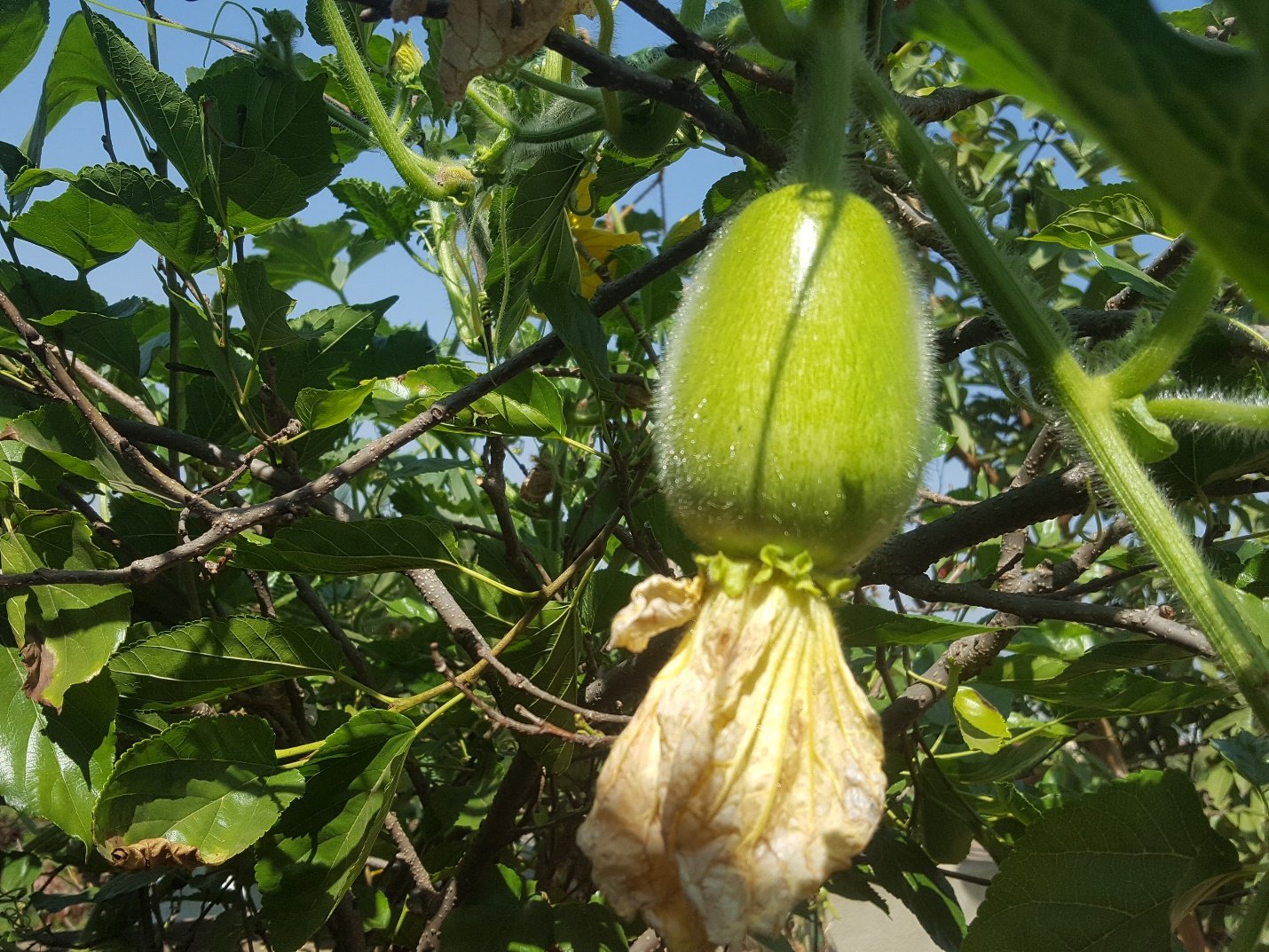
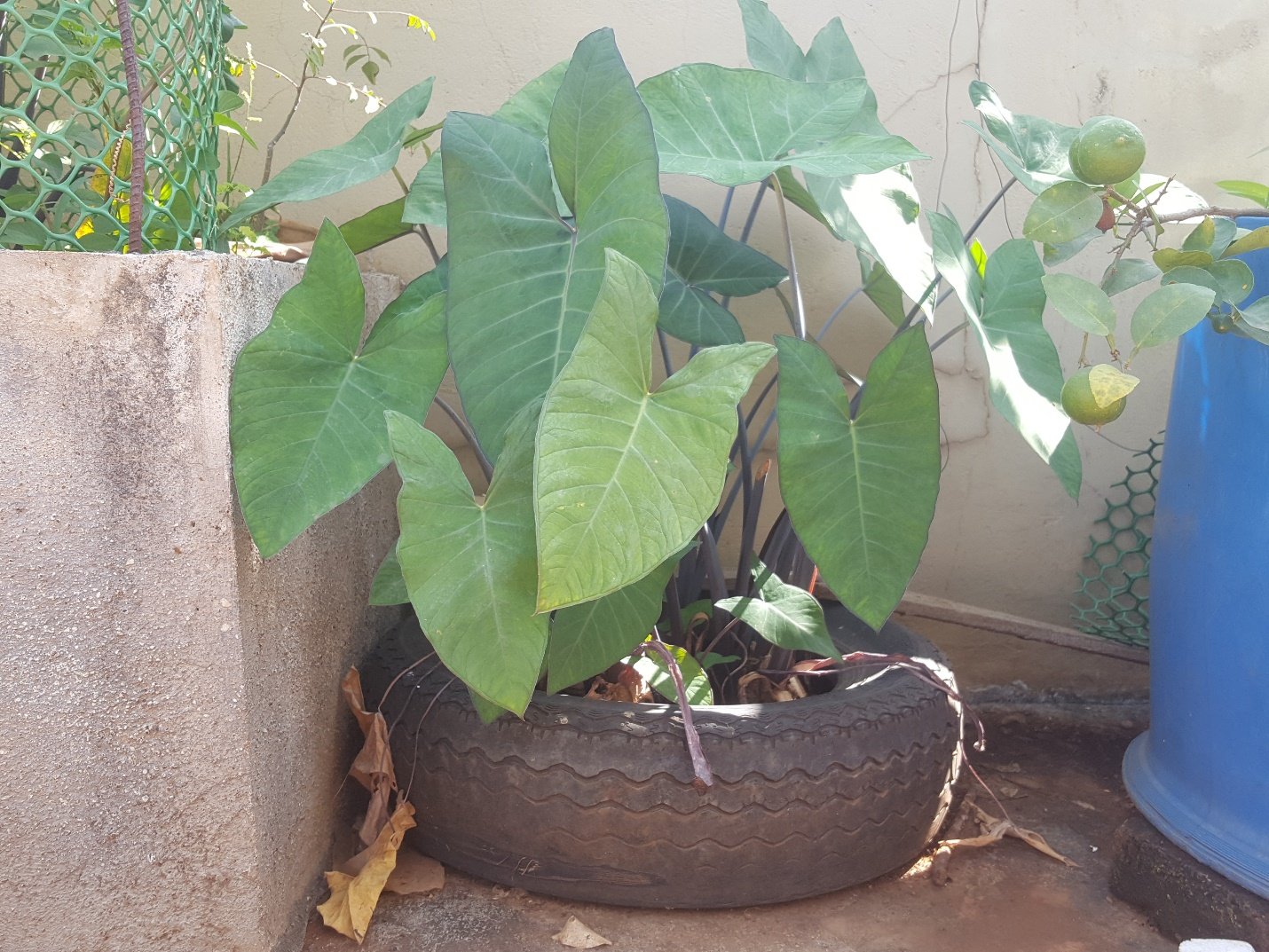
Taro. Observe the container, made from an old tyre
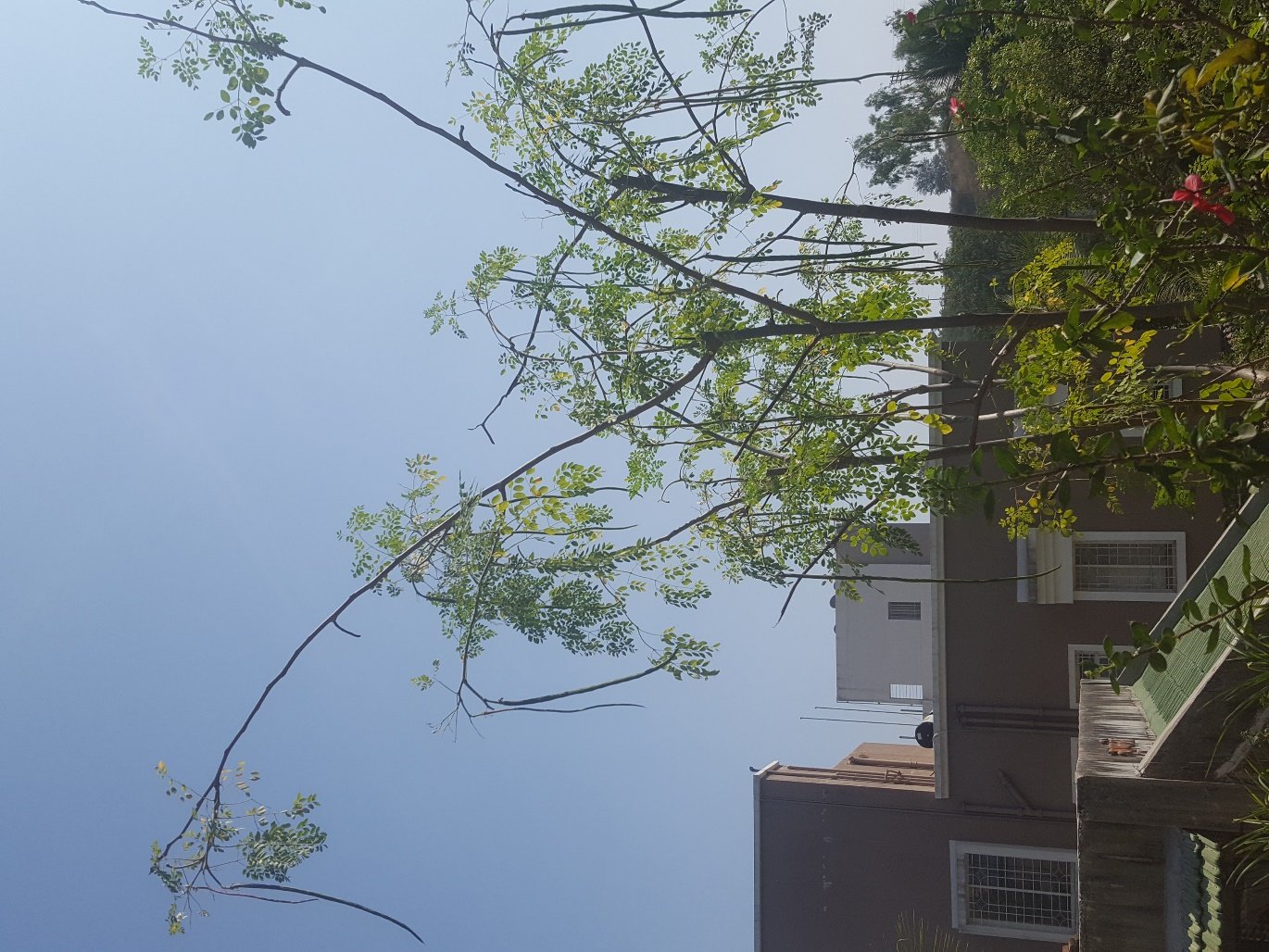
Drumsticks
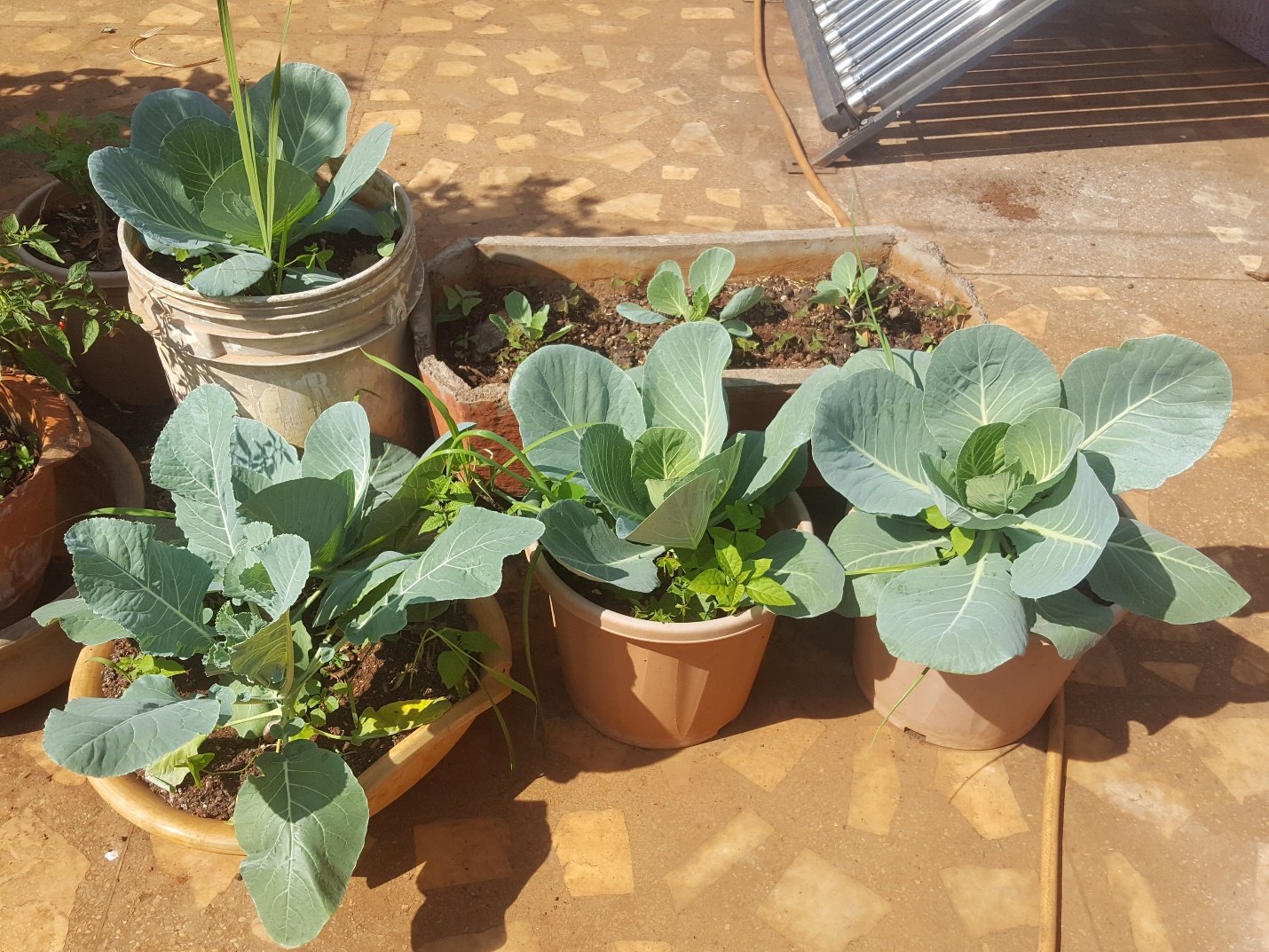
Cabbage, Cauliflower
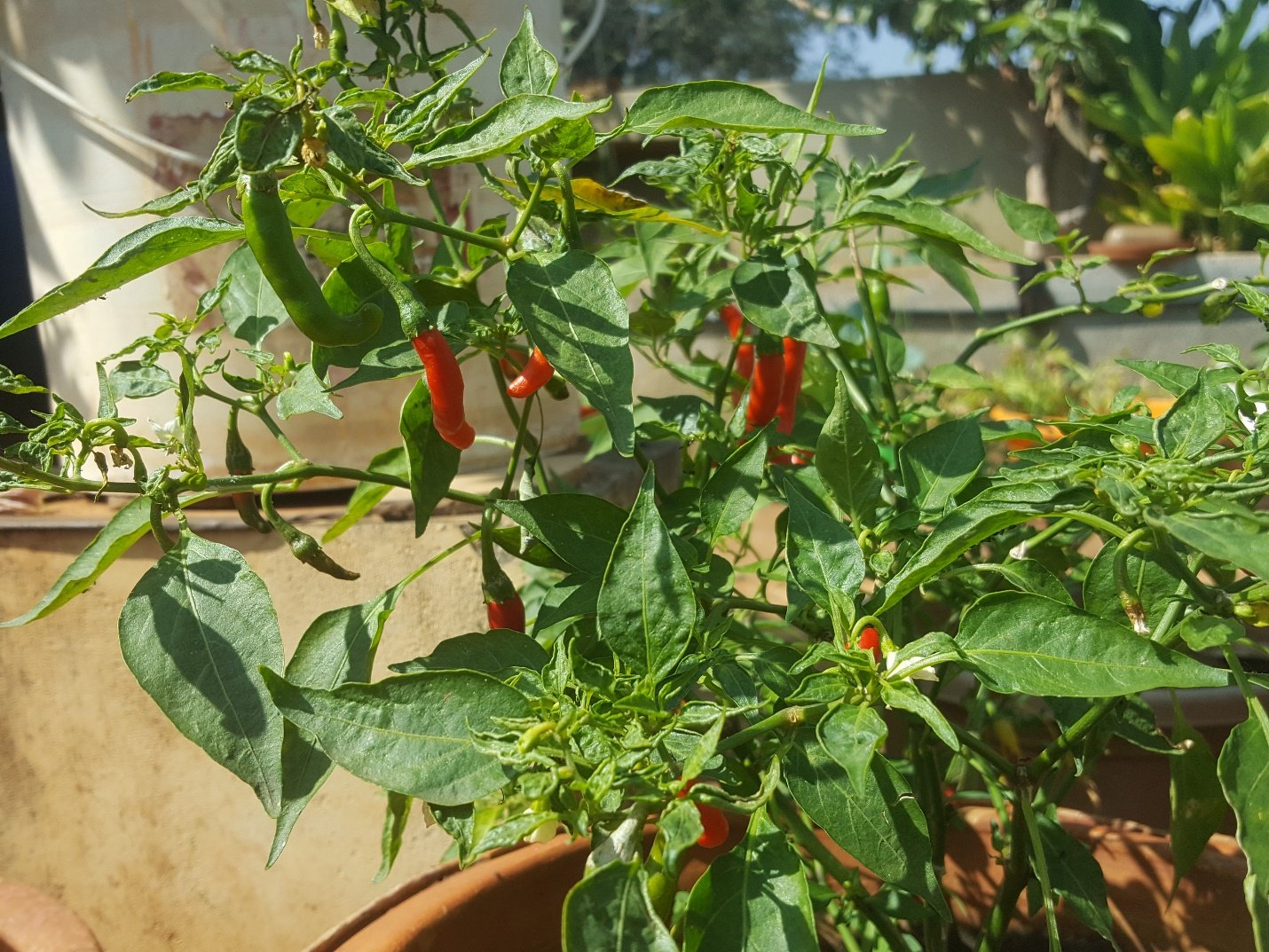

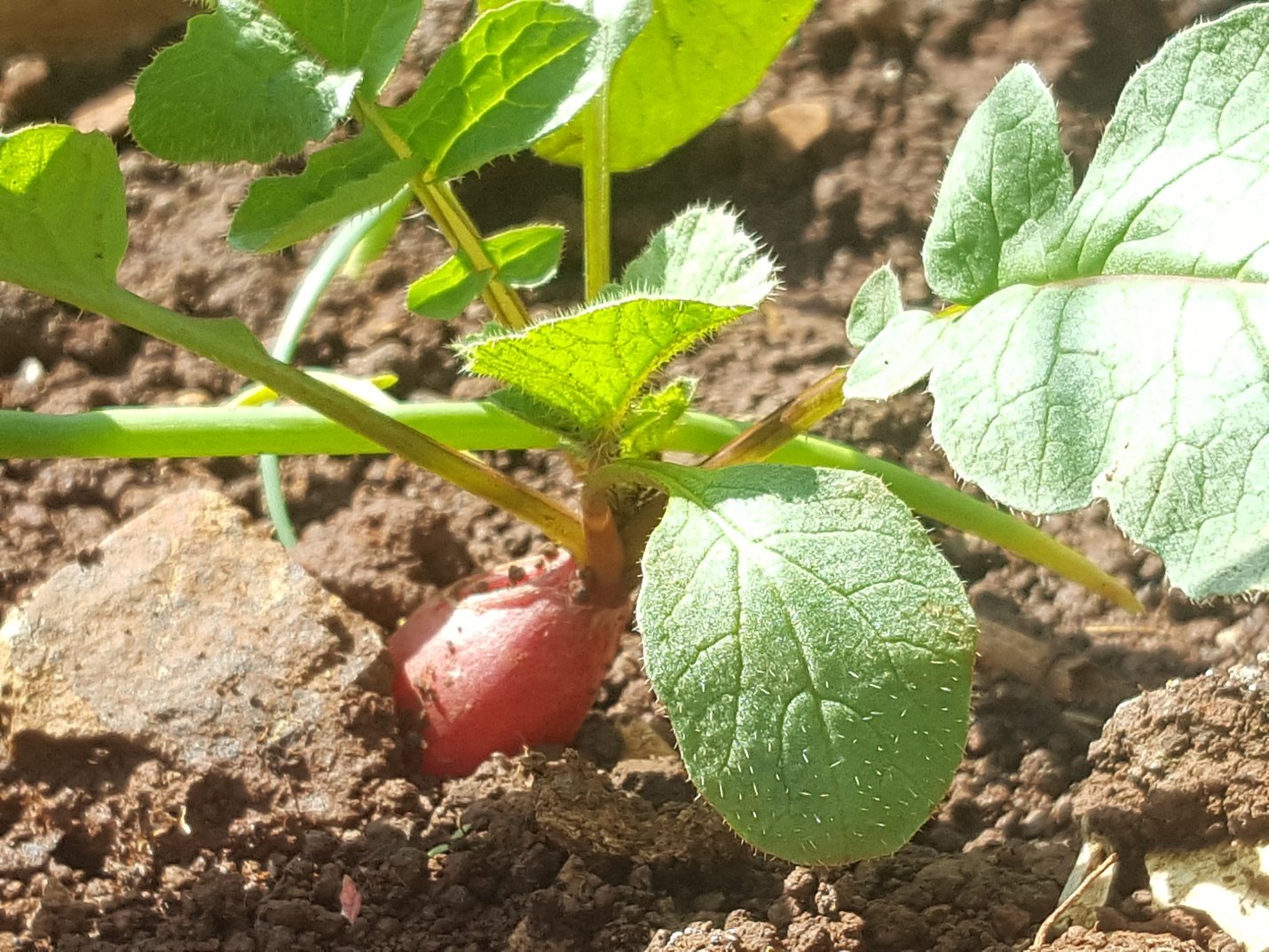
Radish
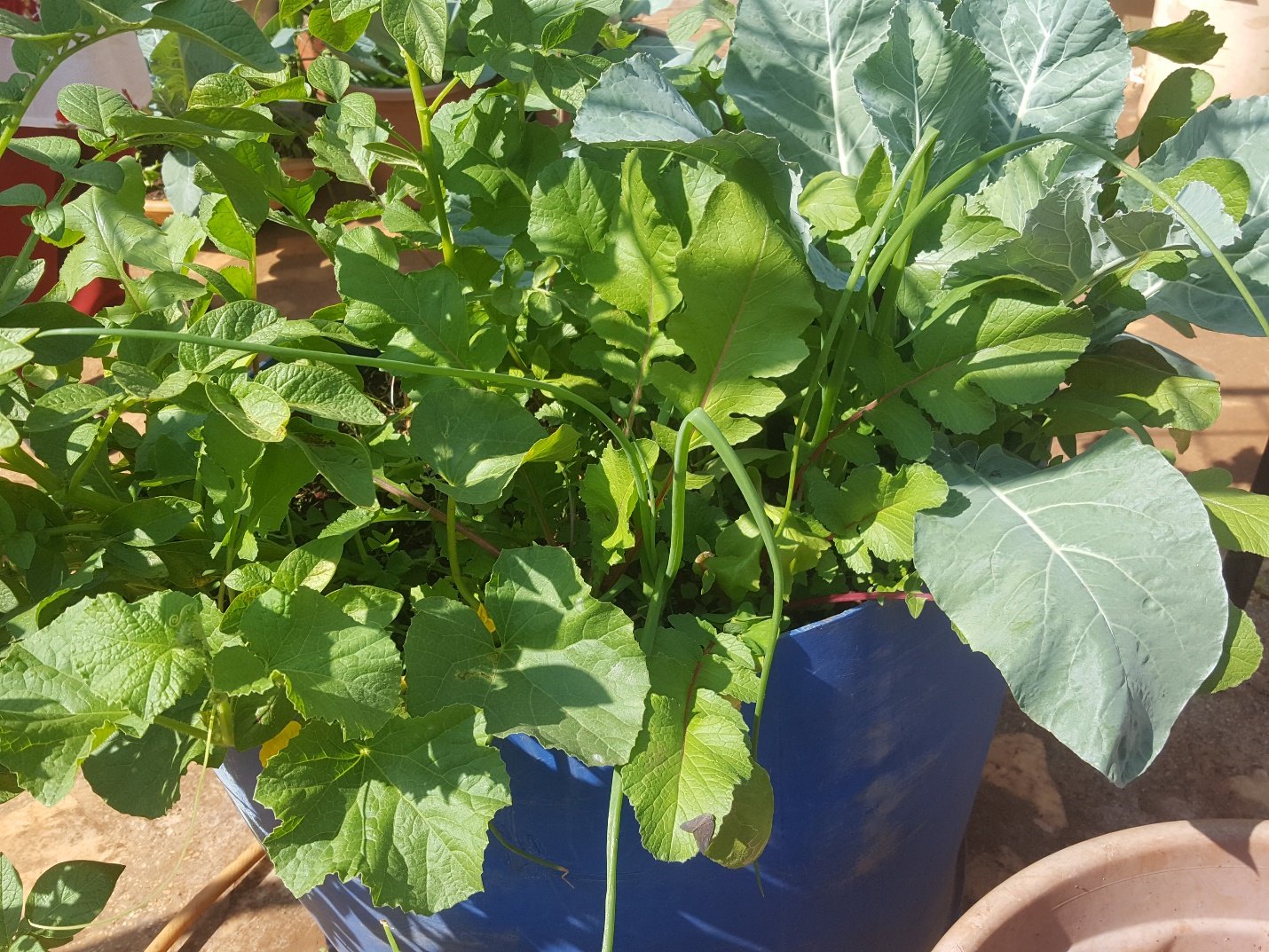
Observe, cabbage, potato, onion, radish growing in the same pot

Terrace garden produce
Fruits
Guava, Papaya, Banana, Pomegranate, Starfruit, Wood Apple (बेल)
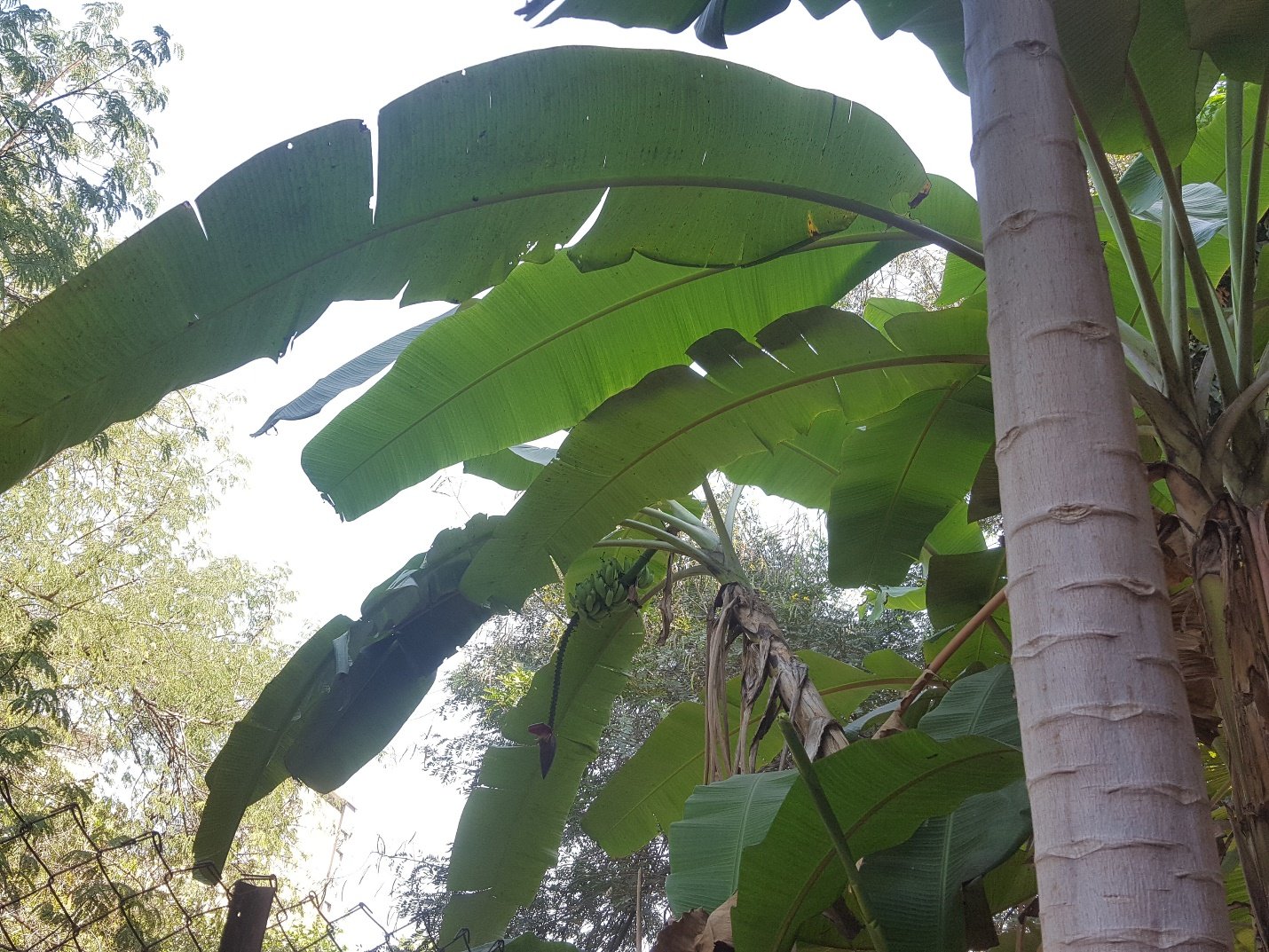
Banana
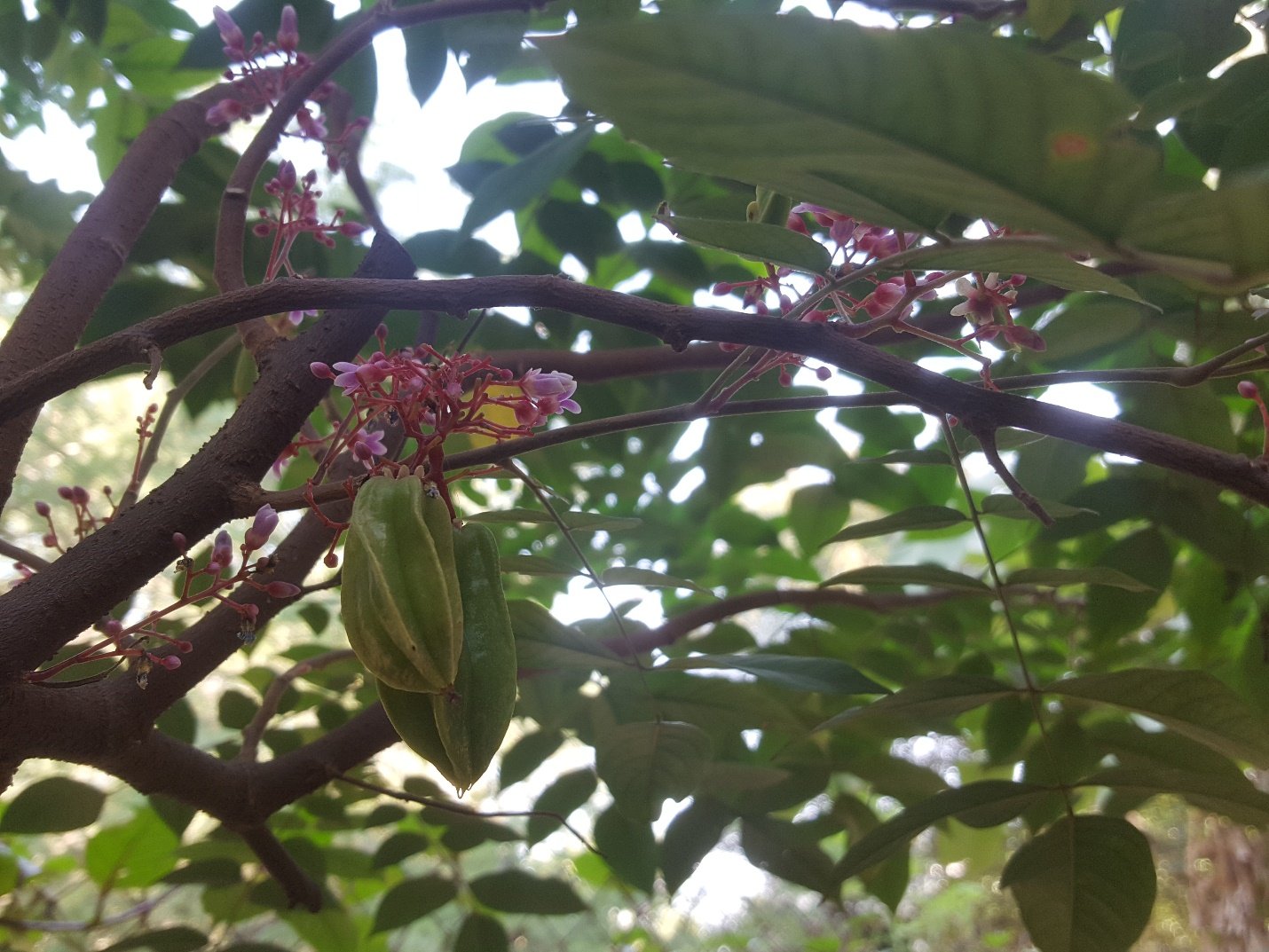
Star fruit
Flowers
Anthurium, Water Lily, variety of Orchids, Hibiscus, Poinsetta, Portulaca, Marigold, Aboli, Shevanti and many more
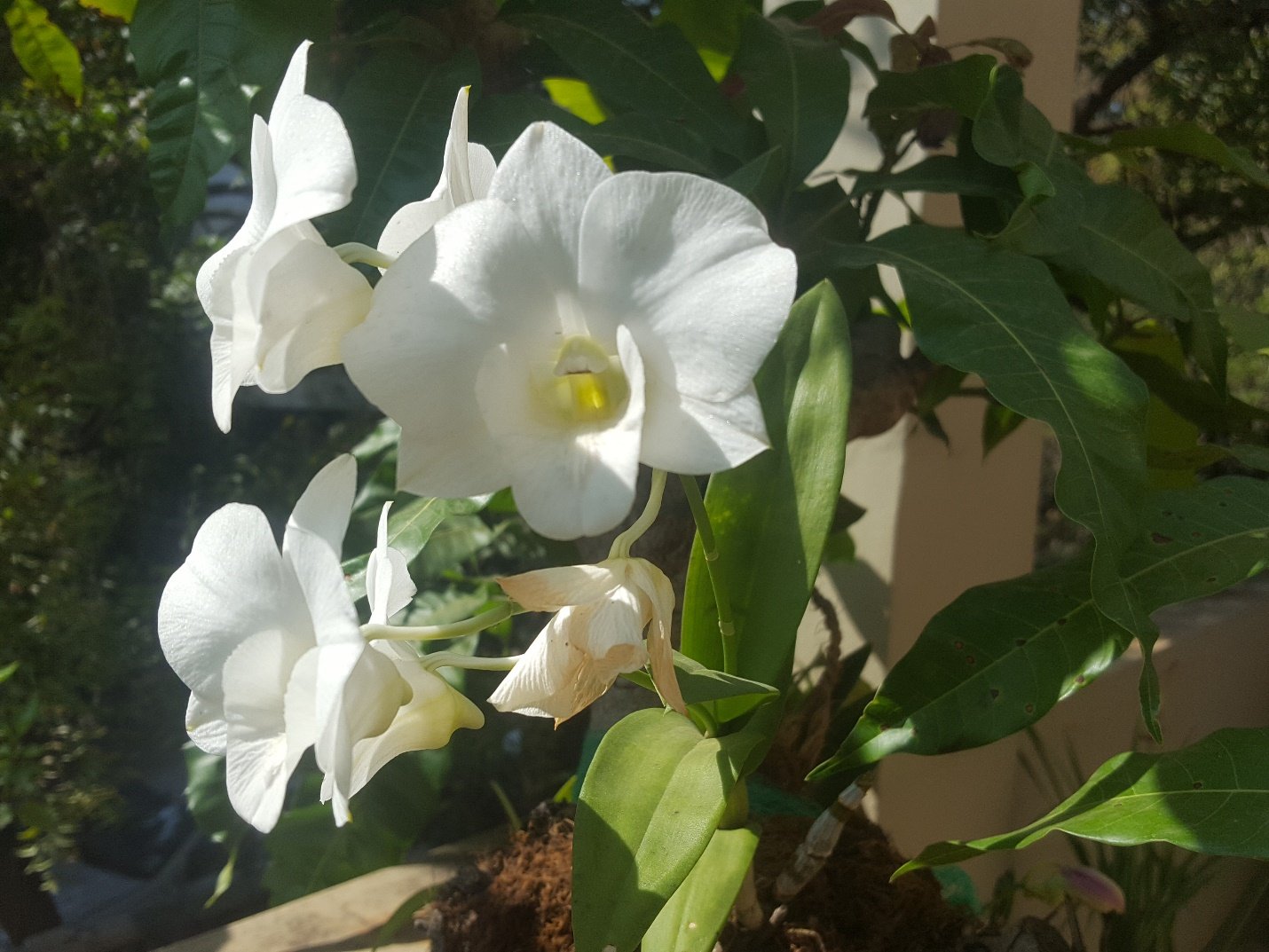
Orchid

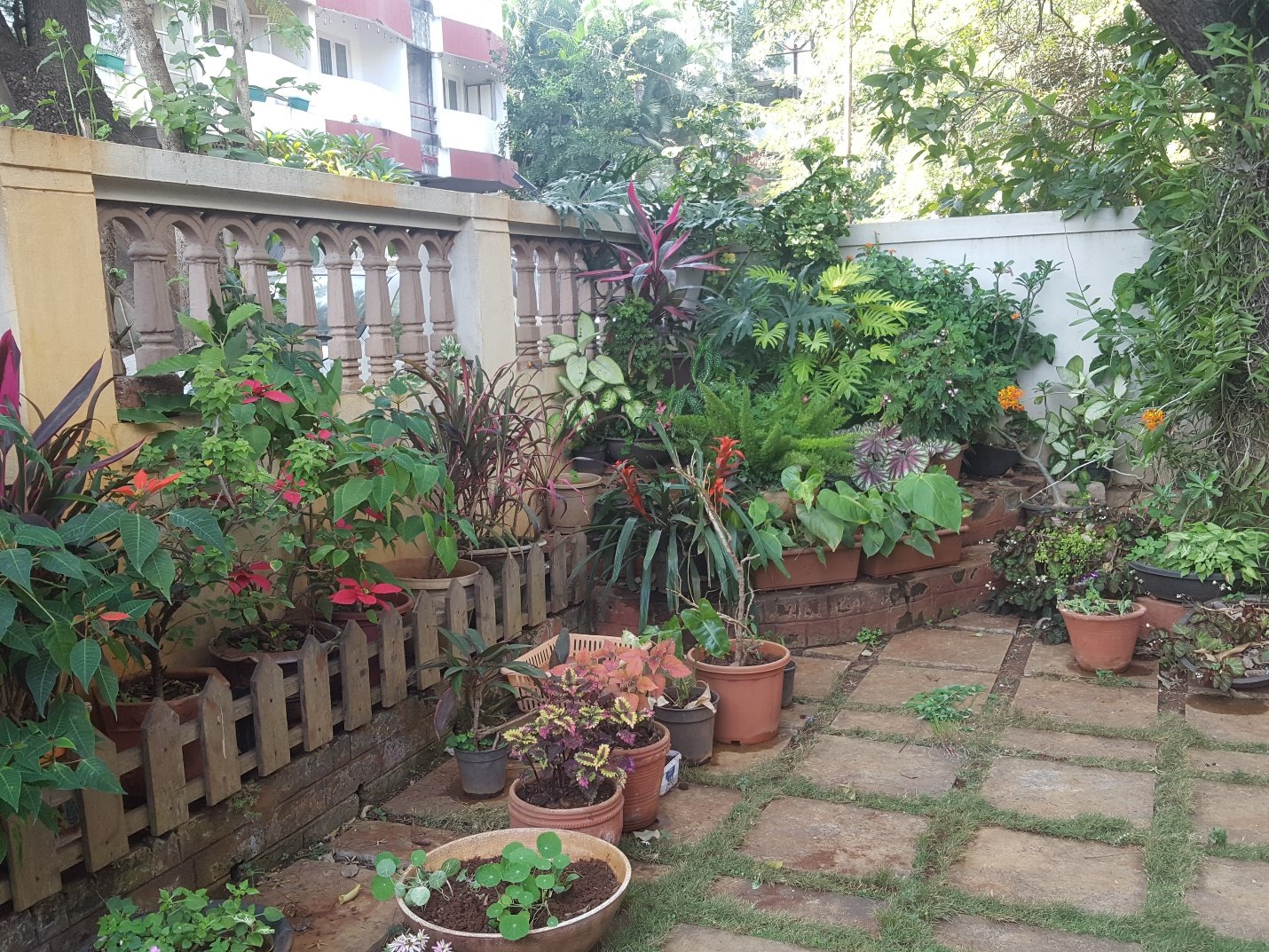
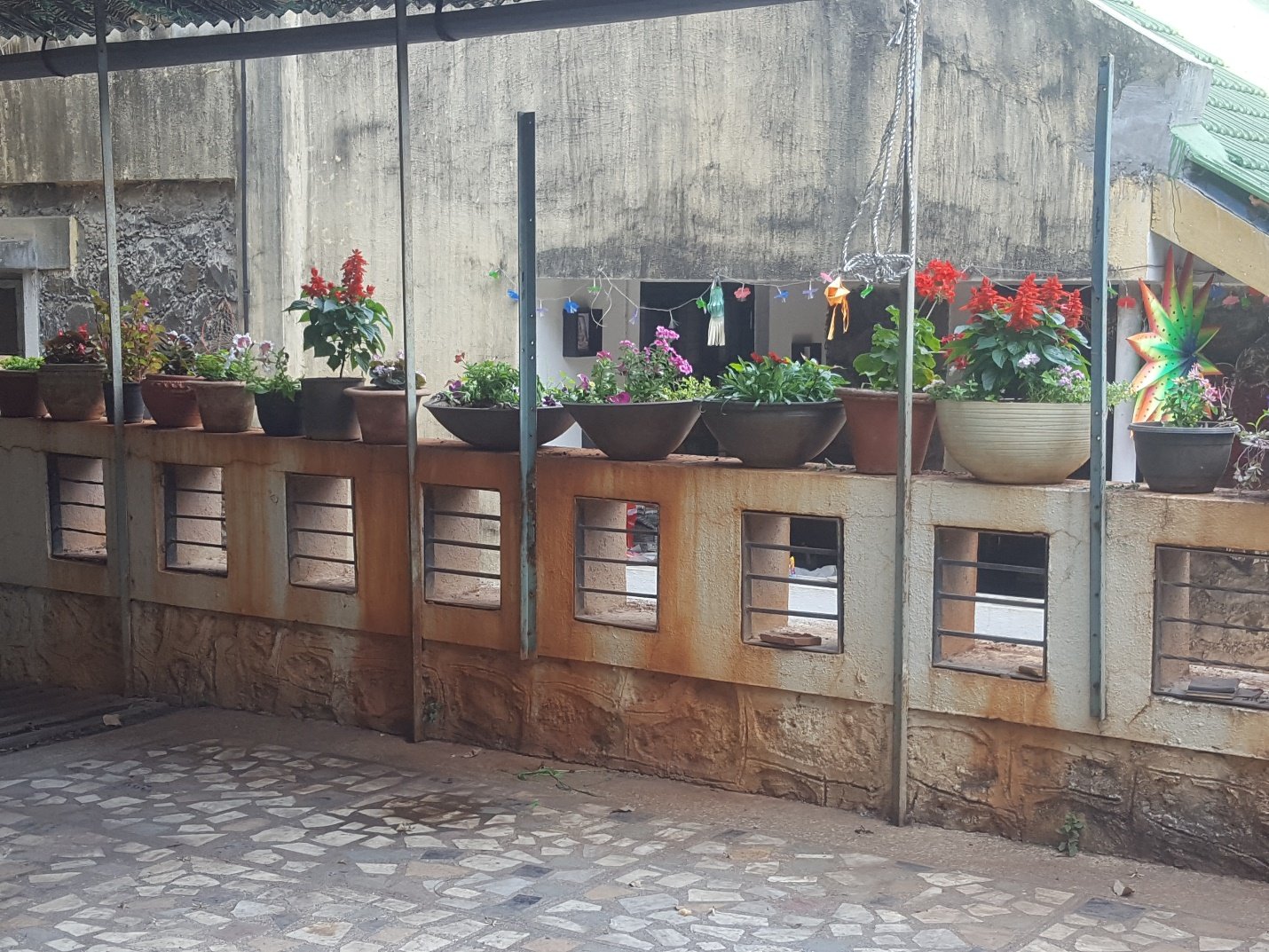
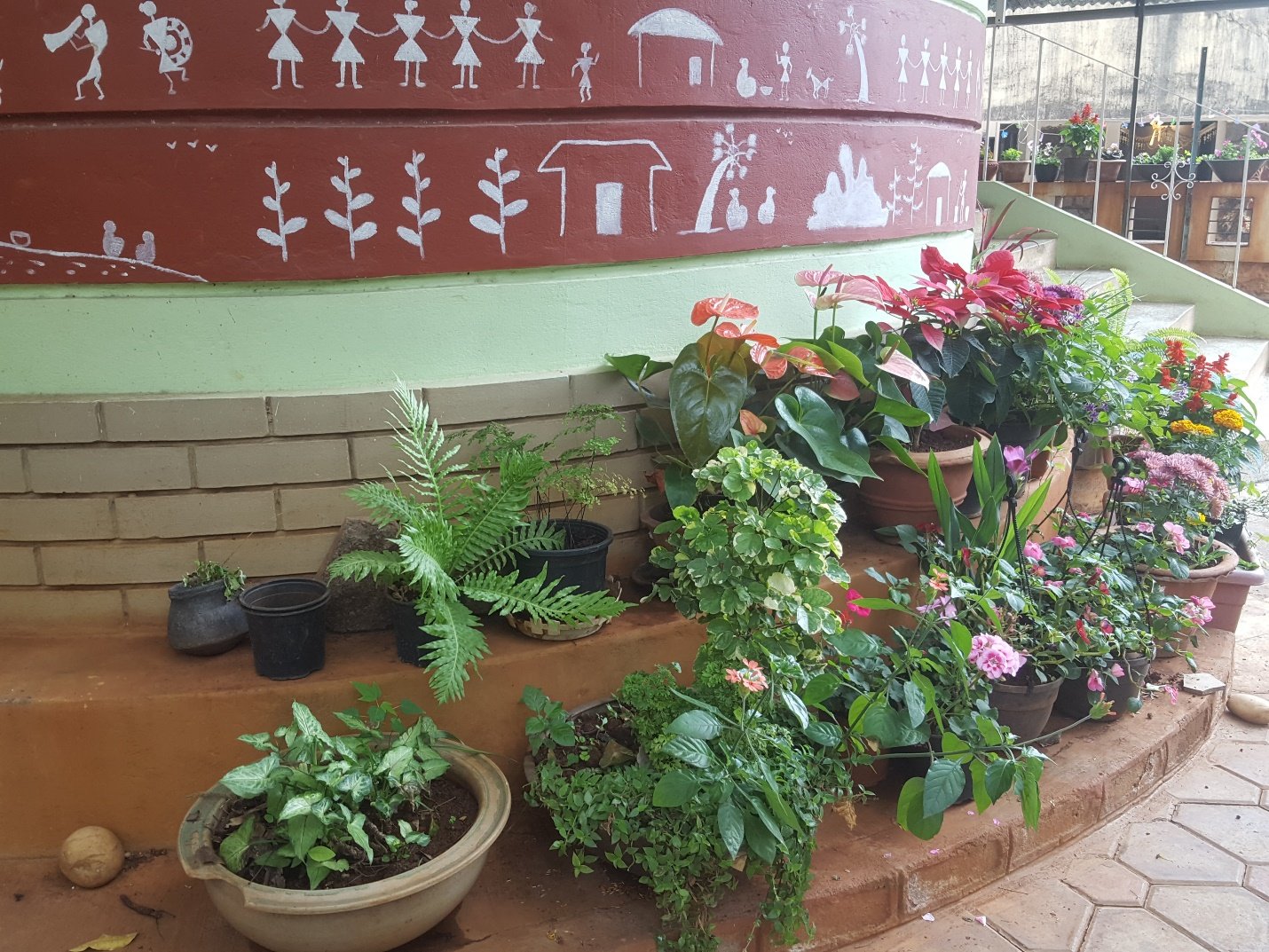
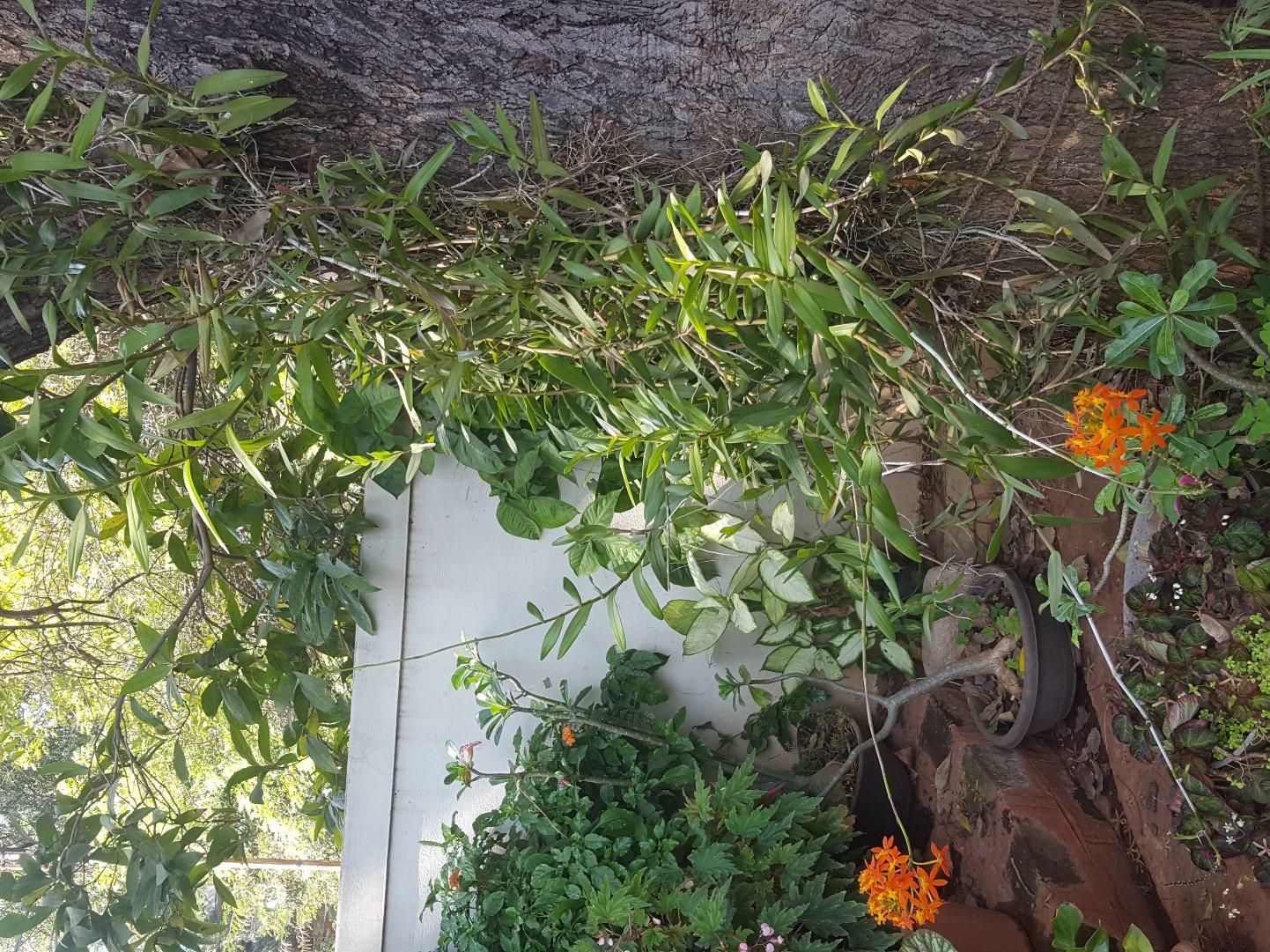
Orchid
Snakes and variety of birds are common visitors to her garden. Many birds build nests. Various butterflies are reared on the plants in her garden.
Anjali tai has completed a course in bee-keeping from Central Honeybee Reaserach Institute in Pune. She observed increase in produce of drumsticks, ashgourds after she kept beebox on the terrace. She never had to hand-pollinate white gourd.
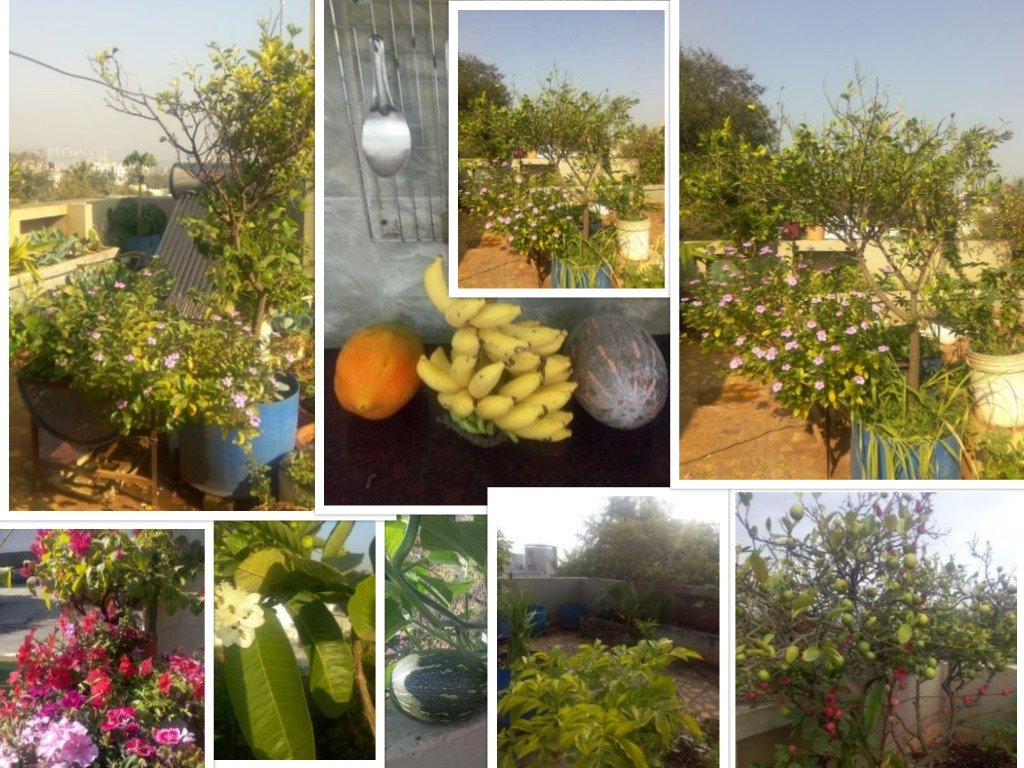
Concluding Words
Till now, Anjali tai has digested 3 tons of wet waste in her garden. What does it take really? Start with easy-to-grow plants like Taro, Curry leaves plant, observe, spend time in your garden, and soon you have beautiful green patch amidst concrete jungle. Family gets fresh, home-grown, toxic-chemical free vegetables; birds, butterflies and honeybees get a habitat, kitchen waste and dry leaves get digested in the garden. We keep air clean, we keep our city clean and our family healthy. How about more and more follow Anjali tai’s footsteps?
Let’s give our kids a healthy environment to enjoy and live. Shall we?





Beautiful garden and very well scripted description.
Beautiful Garden Anjalitai! You certainly inspire us!
Regards
Hi,
I have terrace garden and had grown fee things but I am lacking in managing space, container, fertiliser, pesticides. I doing it but guidance from you would help me growing more and taking care if my plants.
I would like visit or atain sessions if possible.
Hello, I understand. It is very challenging in the beginning. We have a whatsapp group, it is a wonderful, collaborative community, with very knowledgeable, expert gardeners to guide us. Do share your number, I will add you to the group. You can also mail your number to pune.brownleaf@gmail.com. You can seek guidance, ask queries on the group. We all will help you with your garden.
We arrange garden visits from time to time and some interactive sessions. Like our fb page to get updates. https://www.facebook.com/BrownLeafPune/
Amazing skills of gardening . I could observe Anjali as my friend performing all gardening activities by heart nd with dedication.
She also has spread the message of using each nd every waste from the kitchen to prepare compost.
Also she believes in keeping the surrounding clean ndnot to damage nature in any way.
Anjali has done a very good work & trained many also. She has set up an ideal for people like us interested in developing gardens.
Mohini